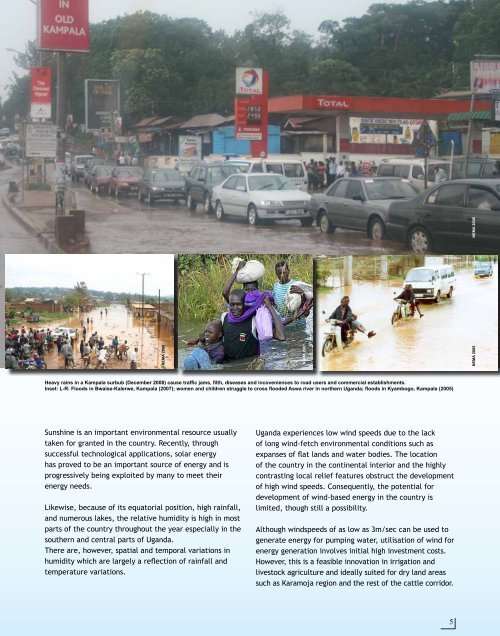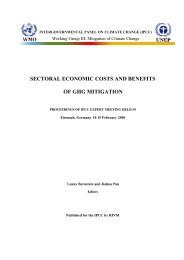The Uganda Atlas - GRID-Arendal
The Uganda Atlas - GRID-Arendal
The Uganda Atlas - GRID-Arendal
You also want an ePaper? Increase the reach of your titles
YUMPU automatically turns print PDFs into web optimized ePapers that Google loves.
NEMA 2008<br />
NEMA 2007<br />
NEMA 2005<br />
NEMA 2008<br />
Heavy rains in a Kampala surbub (December 2008) cause traffic jams, filth, diseases and incoveniences to road users and commercial establishments.<br />
Inset: L-R: Floods in Bwaise-Kalerwe, Kampala (2007); women and children struggle to cross flooded Aswa river in northern <strong>Uganda</strong>; floods in Kyambogo, Kampala (2005)<br />
Sunshine is an important environmental resource usually<br />
taken for granted in the country. Recently, through<br />
successful technological applications, solar energy<br />
has proved to be an important source of energy and is<br />
progressively being exploited by many to meet their<br />
energy needs.<br />
Likewise, because of its equatorial position, high rainfall,<br />
and numerous lakes, the relative humidity is high in most<br />
parts of the country throughout the year especially in the<br />
southern and central parts of <strong>Uganda</strong>.<br />
<strong>The</strong>re are, however, spatial and temporal variations in<br />
humidity which are largely a reflection of rainfall and<br />
temperature variations.<br />
<strong>Uganda</strong> experiences low wind speeds due to the lack<br />
of long wind-fetch environmental conditions such as<br />
expanses of flat lands and water bodies. <strong>The</strong> location<br />
of the country in the continental interior and the highly<br />
contrasting local relief features obstruct the development<br />
of high wind speeds. Consequently, the potential for<br />
development of wind-based energy in the country is<br />
limited, though still a possibility.<br />
Although windspeeds of as low as 3m/sec can be used to<br />
generate energy for pumping water, utilisation of wind for<br />
energy generation involves initial high investment costs.<br />
However, this is a feasible innovation in irrigation and<br />
livestock agriculture and ideally suited for dry land areas<br />
such as Karamoja region and the rest of the cattle corridor.<br />
5

















